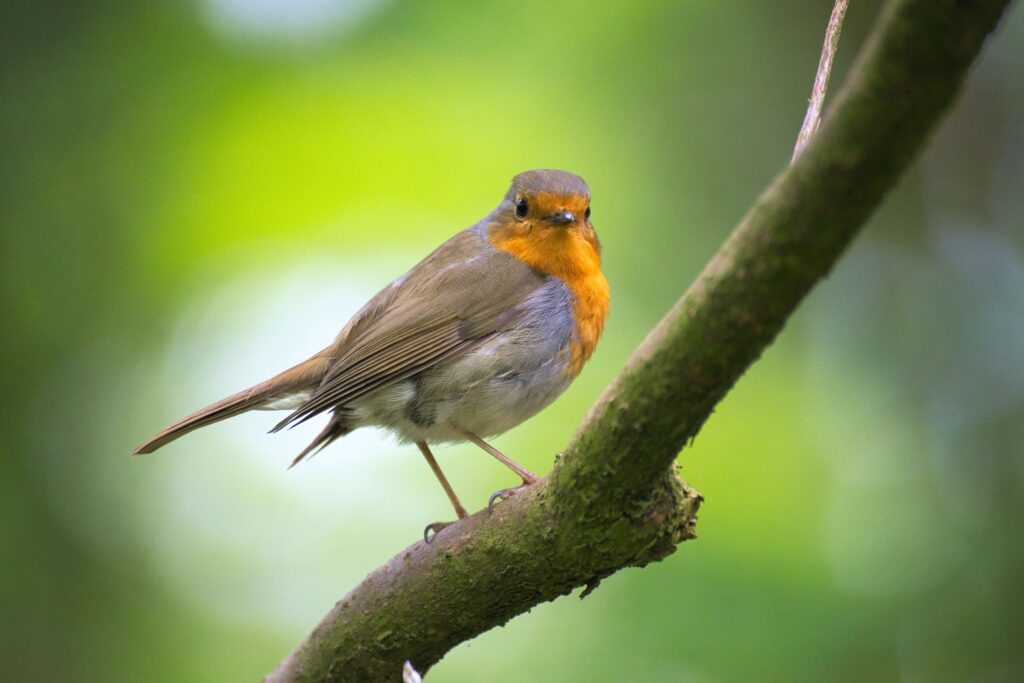The RSPB’s Big Garden Birdwatch is held every January. With over 38 million birds lost since 1970, it’s vitally important that everybody plays a part in helping bird life to thrive in our gardens.
Most people love to watch birds gather in their garden; but for many this means hanging fat balls or peanut feeders to attract them. Unfortunately, this can also attract rats and squirrels – not such welcome visitors. However, there are several ways you can attract birds into your garden more naturally.
Birds thrive on berries and seeds, and there are many different planting possibilities to ensure that there is a variety of both throughout the year. From lavender seeds to rowan trees, there are many options that will add colour and interest to your garden as well as being natural attractions to different bird species.

Native species like hawthorn bring delightful early flowers in late Winter/early Spring and then go on to provide a valuable food source well into the Winter months, attracting Chaffinches, Blackbirds, Starlings, Redwings, Fieldfares and Greenfinches. Providing late fruiting plants is very important as the weather becomes colder, food gets scarcer and birds struggle to survive. Ivy, rowan, hawthorn, holly, crab-apple and mistletoe all provide valuable winter food sources. You may dislike parasitic mistletoe on your apple tree; but watch it on a winter’s day and you’ll quite possibly see Blackcaps and Mistle Thrushes feasting on its berries. If you’re in the Three Counties (Worcestershire, Herefordshire and Gloucestershire) then you’re lucky to be in an area that is profluent in Mistletoe as well as having the clay soil in which many of the berry plants I’ve mentioned will flourish.
Anything that seeds will be welcome. Avoid cutting back seeding plants as soon as they have flowered, instead leave them to go to seed into the Autumn and watch what arrives to feed. You will find that as the years go by, you’ll have repeat visits from the same species as they earmark your garden as one where they can find food at certain times. Sunflowers are an excellent choice; not only will they give a magnificent summer show but the flower heads will become natural bird feeders in Autumn and Winter. Likewise with Teasel, Lavender and Buddleia plants; a wildlife wonder as they attract bees and butterflies in the summer whilst in flower, before transforming into a perfect snack bar for smaller bird species such as Finches.
Not only is it important to supply food, but birds need somewhere safe to shelter too. Dense evergreens such as Ivy and Leylandii can provide somewhere to rest up after a good feed on the seeds and berries in your garden, and thorny species such as hawthorn and rambling rose offer both food and protection from prowling cats.
Water is another vital addition to your garden for many reasons. Even the smallest pond offers a haven for wildlife and will attract everything from frogs and newts to dragonflies and of course, birds. Birds need to bathe and drink, and providing these opportunities for them in your garden will undoubtedly help them to thrive. A shallow bird table is ideal for bathing; in cold weather a small ball floating in it can help it to stop freezing over, or pour some warm water over in the morning to give them the chance of a bath before it freezes again.
It’s also worth noting that birds can offer some useful pest control. People may curse the prevalence of blackfly on runner beans in the summer; but before long, if the plants aren’t sprayed with insecticide, flocks of small birds will be clustering on the plants, devouring the insects. They also eat snails, ants, flies and leatherjackets which can be found on natural lawns. In my last blog I wrote on the importance of keeping a natural lawn for many reasons, including for the vast and multiple benefits to wildlife. For birds hunting for worms, snails, flies and ants, a lawn is another opportunity and another element of your garden which will attract them.
The delights of a garden full of birds cannot be underestimated. Join in with this Big Garden Birdwatch, tell the RSPB which species you’ve seen, and let me know too. If you need any further advice on attracting more wildlife into your garden, or some ideas on planting to attract birds, I’d love to hear from you.

